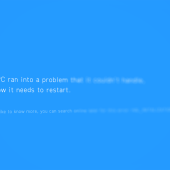
CHEAT SHEET
EPLI. Employment Practice Liability Insurance (EPLI) is a type of management liability insurance that covers certain alleged wrongful employment practices for employers of all sizes.
Coverage. EPLI policies can have insurance coverage limits as little US$100,000 to more than US$25 million. Duty to defend and reimbursement are the most common types of policies.
Benefits. EPLI can benefit in-house litigation management strategies by controlling legal costs, preventing conflict of interests in outside counsel, lessening damage exposure, and lending expertise in foreign venues.
Limitations. EPLI can also have limitations such as its scope of coverage restrictions, choice of defense counsel, and conflict of interests in litigation and settlement strategy.
Dealing with labor and employment litigation is an unavoidable reality for US companies. From small, privately-held companies to multinational corporations, the chance of legal action from dissatisfied employees and former employees is always present. In the United States, most employers with at least 15 employees are covered by at least some federal or state employment laws. This also applies to most labor unions and employment agencies. Moreover, labor and employment disputes are consistently among the top percentage of litigation faced by companies, and by certain industries, such as financial institutions, the energy sector, integrated marketing communications, life sciences and healthcare, and technology and innovation. Even limited contacts with different states in which the company transacts business can expose companies to litigation where as few as one employee operates.
The scale of damages awarded against companies in labor and employment disputes, when evaluated on a macro level, is significant. Between 2010 to 2016, the median award of reported jury verdicts for labor and employment legal actions, exclusive of defense costs or attorney fees, was US$106,800.
One tool widely available to assist companies in dealing with labor and employment litigation that may not be fully understood by in-house legal departments, is Employment Practice Liability Insurance (EPLI). This lack of knowledge about EPLI is understandable: In-house lawyers are not often tasked with procuring a company’s insurance, even when their skillset might help select the best coverage. Yet, by understanding and utilizing EPLI effectively, in-house counsel can demonstrate that they are not just valuable for their litigation acumen, but for their ability to recognize and reduce expenses associated with employment claims. As in-house counsel are well aware, damages from employment litigation can drastically affect a company’s bottom line.
Employment-related damages
Damages awardable in employment claims can vary depending on the type of action brought. Both monetary and nonmonetary relief are available to employment claimants. Some common damages include back pay, front pay, compensatory and punitive damages, and prevailing party fees for the plaintiff.
Back pay can include wages and salary, as well as overtime, shift differentials, commissions, tips, cost-of-living increases, merit increases, and raises due to promotion by showing that the employee would have earned those items absent discrimination. Additional fringe benefits such as vacation pay, pension, and retirement and health benefits can also be included. Front pay is available to compensate a plaintiff for future effects of discrimination when reinstatement is not feasible, or no comparable position is available. Also recoverable are noneconomic damages such as emotional distress, pain and suffering, or harm to reputation. Nonmonetary relief, such as injunctive or other equitable forms of relief, like reinstatement, can be sought as well. Finally, in addition to the economic and noneconomic damages, plaintiff ’s prevailing party attorney fees are recoverable in most types of employment claims.
The scale of damages awarded against companies in labor and employment disputes, when evaluated on a macro level, is significant. Between 2010 to 2016, the median award of reported jury verdicts for labor and employment legal actions, exclusive of defense costs or attorney fees, was US$106,800. The average award was US$375,162, and ranged between one dollar and US$42,700,000. Three percent of those awards exceeded two million dollars, and the rest were split almost equally between awards ranging between US$100,000 to two million dollars, or alternatively awards less than US$100,000. The average discrimination award during that time was US$398,936, and the average whistleblower award was US$632,432.
However, those averages fail to fully consider the impact from the three percent of large verdicts and settlements. Between May 2013 and May 2018, there were 186 separate cases resulting in more than two-million-dollar verdicts or settlements, ranging up to a single plaintiff verdict of a staggering US$185 million in a pregnancy discrimination claim. These numbers, considered alongside the more voluminous results, indicate that despite approximately half of the claims resulting in relatively small-dollar resolutions, risk from labor and employment claims is worth heightened scrutiny.
What is EPLI?
EPLI is a form of management liability insurance designed to cover a myriad of alleged wrongful employment practices. These can include allegations of discrimination, sexual harassment, workplace harassment, wrongful termination, violations of certain employment-related laws such as the Family Medical Leave Act (FMLA), as well as retaliation by an employer for actions taken by the employee.
About 39 percent of employers carry EPLI coverage of some type. EPLI is available for employers of all sizes, from companies with fewer than 15 employees all the way up to large corporations with more than 25,000 employees. EPLI policies can provide as little as US$100,000 in insurance coverage limits to as high as US$25 million and more. The insured’s share of the expenses and exposure, referred to as self-insured retentions, can be as low as US$0 out of pocket to as high as US$1,000,000 or more. And while there are various forms of EPLI available, for the purposes of this evaluation, let’s address two of the most prominent: duty to defend policies and reimbursement policies.
Duty to defend policies
In a duty to defend policy, the insurer will retain defense counsel who will represent and defend the insured to resolve or settle the claim. The claim will generally be managed by an experienced claims professional employed by the carrier, in consultation with the company’s officers and corporate counsel. These policies can carry a self-insured retention which operates similarly to a deductible, though with some important distinctions. With a retention, the insured will be responsible for that amount, inclusive of any defense cost incurred as well as any indemnity dollars spent on settlement or a judgment. After it is exhausted, the policy dictates the extent that the insurance company will take over the costs of both defense and covered indemnity exposures. This differs from a deductible, which is generally owed separately from any defense expenses incurred.
Reimbursement policies
In a reimbursement policy, the insurer will have no duty to defend any claim covered by a liability coverage. The insured is responsible for defense; they will select the law firm that will defend the company in court. The insurer will provide reimbursement for some, or all, of the costs, following the retention expiration. This insurance also provides indemnity coverage toward settlements and judgments (as dictated by the policy). Be careful with these types of policies, though, because the insurance company will only provide defense related to the counts that are covered under the policy. Thus, in a lawsuit that contains EPLI covered counts, such as discrimination, but also uncovered counts, like breach of fiduciary duty, the defense provided under the policy will be allocated only based on those covered counts, leaving the remainder of the cost to be paid by the company.
Four ways EPLI can benefit in-house litigation management strategy
1. Control and quantify legal costs
EPLI provides in-house attorneys charged with managing labor and employment litigation some huge advantages over handling such claims without such assistance. One immediate benefit is the ability to utilize the insurer’s billing guidelines. Any company can create and implement billing guidelines for firms, but insurance company guidelines are already established. Retained firms must agree to abide by those guidelines without negotiation. Thus, by utilizing EPLI, the in-house attorney immediately obtains the cost-saving benefits the guidelines provide, without the need to haggle when the law firm is retained. Additionally, an insurer’s hourly billing rates tend to be significantly lower than directly retaining outside counsel.
Billing guidelines control the scope of work permitted, and can help reduce billing fraud and bill “padding,” such as billing for internal conferences, research, drafting documents, and travel time. They force defense counsel and the insurer to consider defense strategy early and often, evaluate how the work is being performed, and requires the insurer to advise on the defense strategy. These benefits are passed on to the insured. And, with the guidelines in place, whether the payment of legal fees is coming from the corporation, the insurer, or some combination of them, payments will be more easily controlled and quantifiable.
2. Prevent conflicts of interest with outside counsel
Using EPLI also helps in-house counsel foster their existing relationships with outside firms by preventing conflicts of interest, a common occurrence in employment matters. The insurer typically limits defense to select firms. Therefore, the company does not need to hire their standard outside counsel when conflicts of interest arise. The insurer is retaining a defense firm for the specific engagement only, which allows the defense firm to remain impartial. The scope of work is limited to the specific litigation engagement, rather than a broader relationship with the company.
EPLI also eliminates conflicts of interest arising from the litigation strategy. Defense of an employment lawsuit may include arguments related to legal advice provided by a company’s regular outside counsel about the underlying employment issue, such as a decision to terminate a worker. When the same firm that advised a company to terminate the plaintiff is also defending the claim, it is difficult to raise such a defense for the company without directly implicating the firm itself in providing faulty or incomplete advice. The outside firm is then in the unenviable position of analyzing whether their prior legal work led to the exposure their client is now facing, and how to apply that to the current matter.
3. Lessens damage exposure for smaller companies
Many of the benefits discussed are considerations for large corporations capable of funding employment litigation themselves, but who are seeking ways to control, limit, or offset those costs. For smaller employers, however, their in-house attorneys may be under the impression that risk from employment claims will rarely apply to their business, due to a lower number of employees. However, while some laws under Title VII and the ADA might apply only to employers with 15 or more employees, several state laws impose far lower employee thresholds.
The damage exposure faced by small businesses from labor and employment claims also justifies their consideration of EPLI. In a recent study evaluating 1,214 closed claims by small to medium sized companies (500 employees or fewer), the claims took on average 318 days to resolve, and 24 percent of the matters resulted in defense and settlement costs averaging US$160,000. Of note, the other 76 percent resulted in no payment by the insurance company, demonstrating the large volume of “nuisance” charges filed. Plus, the average self-insured retention for these surveyed companies was US$50,000. Without EPLI being applied, each smaller company involved would have been forced to spend US$110,000 on average more to reach this same result.
4. Built-in expertise for foreign venues
Employment litigation often arises where the alleged employment violation occurred, not where the defendant company is located. EPLI insurance carriers, though, often select their panel counsel firms based on the specific jurisdictions where the carrier offers insurance. This leads to an insured company obtaining the benefit of experienced employment counsel without the need to search and vet local firms personally. By using firms familiar with the venue of the case, the company obtains guidance related to nuances of that specific venue, advice on types of relief commonly available, the likelihood of remedies, such as injunctions, to be granted, beyond what is in the rules; insight into procedure and judicial temperament, research unique to the forum state, as well as local staff. All of these benefits offset the costs of defense through the insurance rates.
Limitations for using EPLI as part of the litigation management strategy
Scope of coverage restrictions
EPLI provides in-house counsel a multitude of benefits, but it is important to understand there are some limitations to consider when employing these policies as well, particularly where the coverage terms are not fully understood. For example, a lack of coverage may exist for claims which occurred outside of the defined insurance policy period. Coverage can also be limited in scope for actions seeking injunctive and equitable relief, where bodily injury or property damages are asserted, or for actions brought by certain governmental entities for which other insurance is contemplated, such as Occupational Safety and Health Administration or workers’ compensation claims. Such limitations or exclusions can limit defense costs or even reduce or eliminate indemnity coverage. Alternatively, when coverage is provided, some carriers will offer coverage with self-insured retentions that can be so high as to essentially make the policy almost never applicable for indemnity purposes.
In addition to the policy coverage limitations, some states have enacted laws that limit the use of EPLI as well. In California, for example, state law prohibits insurance carriers from insuring for “willful acts” as set forth in Insurance Code section 533. Thus, if an employment lawsuit establishes there were willful acts as part of the allegations, like fraud or malicious, targeted discriminatory acts taken by the employer against the employee, some or all of those counts may not be covered by the insurance purchased. This can result in EPLI excluding punitive damages from coverage, since those types of damages often require some finding of willfulness to be recoverable.
Possible limited choice of defense counsel
One constant source of frustration for insured companies is that the choice of defense counsel may be restricted by the policy. EPLI policies can permit the insurer, not the insured, to select defense counsel. Many companies have a law firm that they work with regularly and whom they want to defend them in the employment dispute. Companies often prefer to work with attorneys they know, regardless of the costs, and this can cause friction with insurers that retain the right to defend the matter with counsel they select.
With a duty to defend policy, it generally defines whether the insured can select their defense counsel (local and state laws should also be consulted). Reimbursement policies, on the other hand, may provide the insured to choose their lawyers, but the EPLI carrier can decide on their rate of reimbursement for defense costs paid to the attorney selected. This too will be governed by the insurance policy, and the insurance company’s billing guidelines, and can limit the money the carrier will pay based on hourly rates, scope of work, and number of attorneys employed.
However, when considering the advantages of using personal outside counsel as opposed to EPLI selected firms, a savvy in-house practitioner should evaluate whether the selected insurance is an “eroding” or “wasting” policy, where both defense costs and indemnity dollars are applied to the same policy limit. In that instance, costs spent defending the case reduce the available limit of insurance available to settle the claim or pay a judgment. A firm that charges higher rates, or uses more attorneys, is quickly reducing the amount of insurance money available in the aggregate. This could also impact what constitutes a valid “policy limit” demand from a plaintiff and could limit potential bad faith recovery for the company should they disagree with the insurer as to strategy or resolution plans.
Potential conflicts of interest over litigation and settlement strategy
EPLI, as a type of third-party liability insurance, is tripartite in nature. As such, the work performed by the defense counsel retained by the insurer can place the defense attorney in a potential conflict of interest in trying to serve two masters, her client and the insurance company. Additionally, while an insured can reject the counsel selected or proposed by the insurance carrier, this can, in some instances, breach the insurance contract or trigger other conditions therein. And, insurance companies can even reserve the right to settle claims over the objection of the defendant.
Yet, though these conflicts exist, in most cases, the insured and carrier are both interested in disposing of a case on the best possible terms. And, when conflicts of interest arise, insurance and common law allow independent counsel to represent the insured. Beyond that, an insured company can, and often will, retain separate counsel to represent their interests in addition to, and sometimes in opposition to, the insurer’s appointed defense counsel. However, how effective this approach is will depend on how well the in-house counsel understands the EPLI policy terms, conditions, and implementation.
Conclusion
Through using EPLI effectively, inhouse counsel can reduce time spent and costs incurred for their legal departments, gain additional expertise in negotiation and litigation strategy, employ local counsel in foreign venues, and limit conflicts with outside counsel. All of this in addition to using insurance dollars for payment of settlements or judgments. One size or type of EPLI may not fit all companies, but the right policy can be tailored to work for litigation departments large and small. With exposure to employment claims being ever present, each tool in an in-house lawyers’ toolkit is worth having, and using, to help ensure the best service for their organization. EPLI is one such tool, and as is one every in-house lawyer should understand and utilize when appropriate
References
2018 Litigation Trends Annual Survey, Norton Rose Fulbright. Labor and employment actions ranged between 27 percent to 59 percent by sector of all litigation faced by these organizations. And, while labor law disputes do not always result in complex litigation, the same survey noted that at least among the life sciences, healthcare, and technology sectors, labor litigation is among the three most concerning litigation types faced.
Types of Damages Available In Employment Cases, Barbara L Johnson, ABA Section of Labor and Employment Law, 2011 Annual Conference.
Employment Practice Liability: Jury Award Trends and Statistics 2017 ed. Jury Verdict Research.
Employment Practices Liability: Sample Verdicts and Reported Settlements in Excess of $2 Million, Kaufman
Borgeest & Ryan LLP (It should be noted that this matter was later resolved through settlement while on appeal).
Common EPLI claims arise from: EEOC Charges of Discrimination and litigation covering Discrimination Claims Brought under Title VII of the Civil Rights Act of 1964; Age Discrimination in Employment Act of 1967 (ADEA); Disability Discrimination Under Title I of the Americans with Disabilities Act; the Family and Medical Leave Act; The Pregnancy Discrimination Act of 1978; Breach of Employment Contracts; Wage and Hour Claims; Retaliation Claims; Various Common Law Claims (Wrongful Termination, Defamation, Negligence).
There are additional differences between retentions and deductibles related to issues with insolvency of companies and relative to settlement that can vary based on the policies. In-house counsel should discuss the specifics of the coverage restrictions with their insurance agent or broker for a more in depth understanding of policy provisions.
The Fair Employment and Housing Act in California applies to employers with five or more employees. Alaska has statutes which apply to employers with one or more employees. The FLSA (which governs the payment of overtime wages) applies to organizations of all sizes.
2017 Hiscox Guide to Employee Lawsuits.
Working With Local Counsel: Getting the Hometown Advantage By Stewart I. Edelstein; New York Law Journal April 17, 2012.
Ironic and Unnecessary Controversy at 535-536
Id. at 536 (citing Douglas R Richmond, Lost in the eternal Triangle of Insurance Defense Ethics, 9 GEO. J. Legal Ethics 475, 476-77 (1996)).
Id., (citing Missouri Supreme Court in In re Allstate Ins. Co., 722 S.W.2d 947, 952 (Mo. 1987)).
ACC EXTRAS ON… Employment litigation
ACC Docket
Avoiding Employment Litigation: A Guide for Multinational Companies (May 2019).
Articles
Understanding the Business of Employee Litigation (June 2018).




